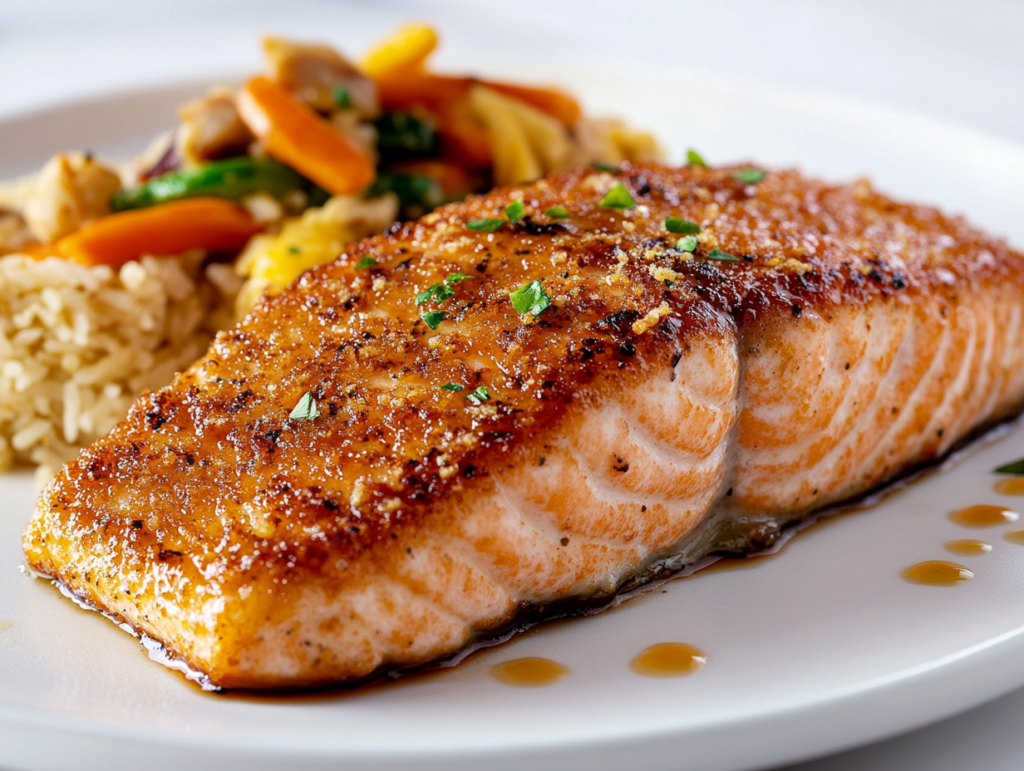Bring the sizzling flavors of a Japanese steakhouse to your kitchen with this Hibachi Salmon recipe. Perfectly seared with a golden crust and basted in garlic butter, this dish is rich, flavorful, and irresistibly tender.
Pair it with a refreshing Cucumber and Tomato Salad for a crisp contrast or enjoy it alongside a warm, brothy Clear Soup for a comforting start to your meal.
It’s a simple yet impressive way to elevate your weeknight meals. Quick to prepare and packed with restaurant-quality flavor, this dish is ideal for busy nights when you crave something special without the hassle.
Perfect For A Laid-Back Weeknight Dinner!
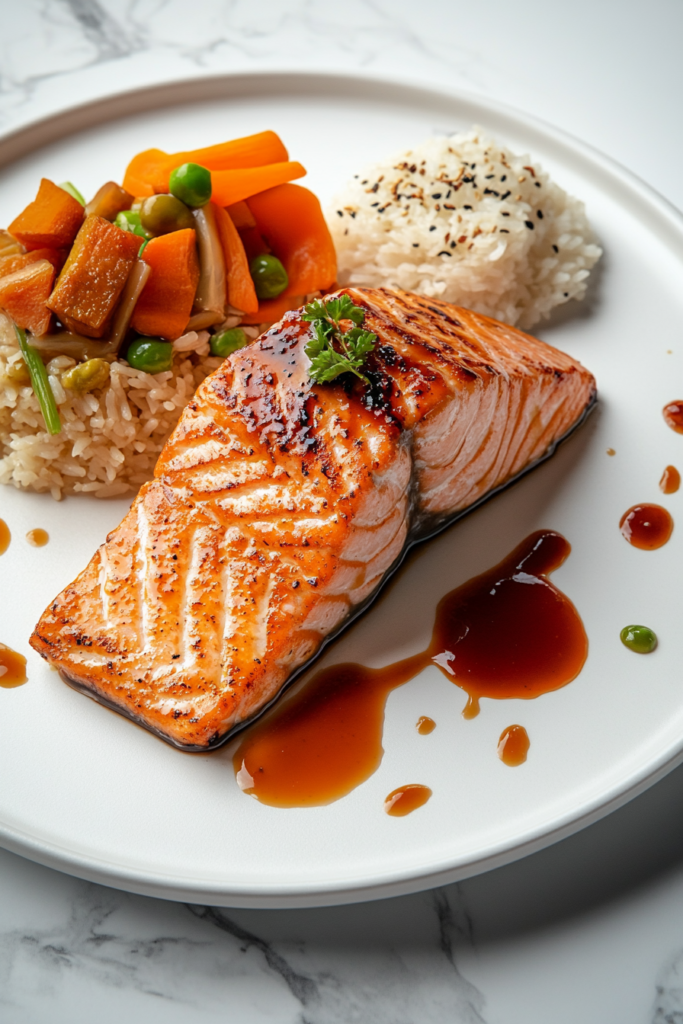
- Effortless Gourmet Experience – This dish brings restaurant-quality flavors to your table with minimal effort, making any weeknight feel special.
- Light but Satisfying – The balance of buttery richness and fresh ingredients keeps it indulgent yet refreshing, perfect for unwinding after a long day.
- Quick and Easy Prep – Ready in under 30 minutes, this recipe is ideal for nights when you want something delicious without spending hours in the kitchen.
- Customizable to Your Taste – Adjust the seasonings, add a spicy kick, or drizzle with extra sauce to make it uniquely yours.
- Pairs Well with Any Mood – Whether you’re craving something cozy or light, this dish adapts effortlessly, making it a go-to favorite for all occasions.
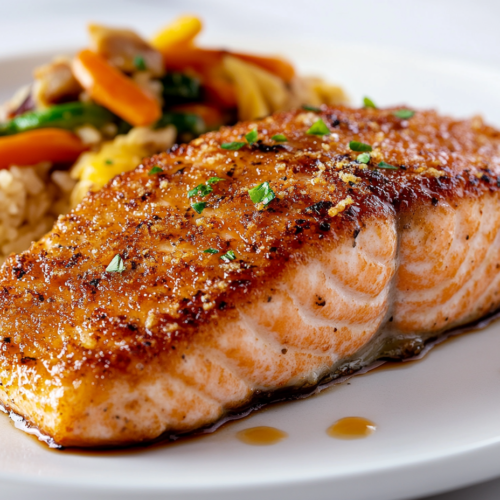
Hibachi Salmon Recipe
Equipment
- Non-stick pan
- Tongs
- Paper towels
- Small mixing bowl measuring spoons
- Cooking spatula
- Citrus juicer
- Whisk
Ingredients
- 1 tbsp minced garlic
- 3 salmon fillet
- ¼ tsp freshly ground black pepper
- 2 tbsp cooking wine
- 2 tbsp soy sauce
- 2 tbsp freshly squeezed lemon juice
- 1 tbsp toasted sesame oil
- 1 tbsp minced ginger
- 1 tbsp extra virgin olive oil
Instructions
- Rinse and pat dry the salmon fillets using paper towels.
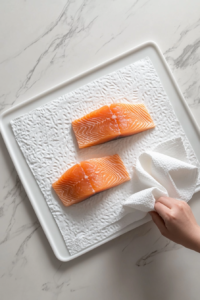
- Heat a non-stick pan over medium-high heat, then add sesame oil and extra virgin olive oil.
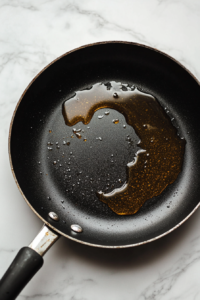
- Once the oil is hot and shimmering, place the salmon fillets in a single layer and sear for about four minutes.
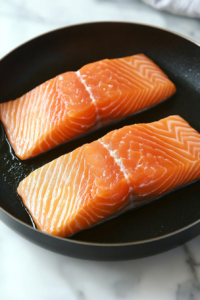
- Flip gently using tongs and cook the second side for another three to four minutes.
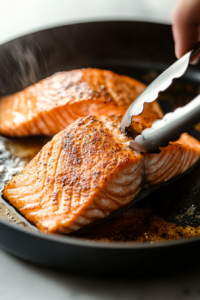
- Avoid overcooking; some pinkness should remain in the center as the fish will continue cooking after removal from heat.
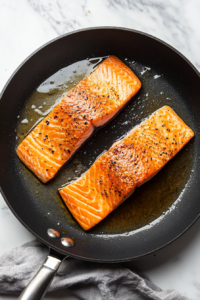
- Transfer the fillets to a plate and set aside.
- Reduce the heat to medium and sauté ginger and garlic in the same pan for 15-20 seconds.

- Add soy sauce, cooking wine, lemon juice, and black pepper, stirring continuously for another 10-15 seconds.
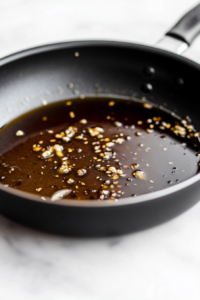
- Return the salmon fillets to the pan, ensuring they are well coated in the sauce.
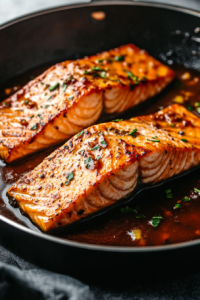
- Finally, transfer the fillets to a serving plate and drizzle the remaining sauce over them.
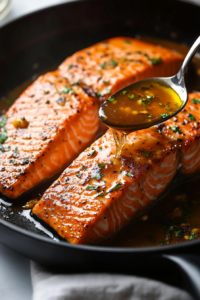
- Serve hot.
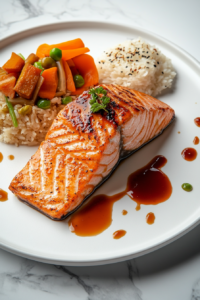
Notes
- Cooking salmon with the skin on helps retain moisture and prevents sticking to the pan.
- For extra flavor, marinate the fillets in soy sauce and lemon juice for 15 minutes before cooking.
- If using a cast iron skillet, preheat it well and lightly oil it to prevent the salmon from sticking.
- A squeeze of fresh lemon juice before serving enhances the dish’s brightness and balances the richness.
| Nutrition | Value |
| Calories | 388kcal |
| Carbohydrates | 9g |
| Fibre | 0.4g |
| Fat | 25g |
| Protein | 36g |
| Cholesterol | 94g |
Tips To Ease Your Job!
- Use a Fish Spatula: A thin, flexible fish spatula makes flipping the fillets easier without breaking them apart.
- Pat the Salmon Dry: Removing excess moisture helps the fillets develop a golden, crispy crust.
- Tilt the Pan for Even Coating: When adding the sauce, tilt the pan slightly to help the fillets soak up the flavors evenly.
- Use Fresh Ingredients: Fresh garlic, ginger, and lemon juice will enhance the dish’s flavor more than pre-packaged alternatives.
- Let the Salmon Rest: Allowing the fillets to rest for a minute after cooking keeps them juicy and flavorful.

